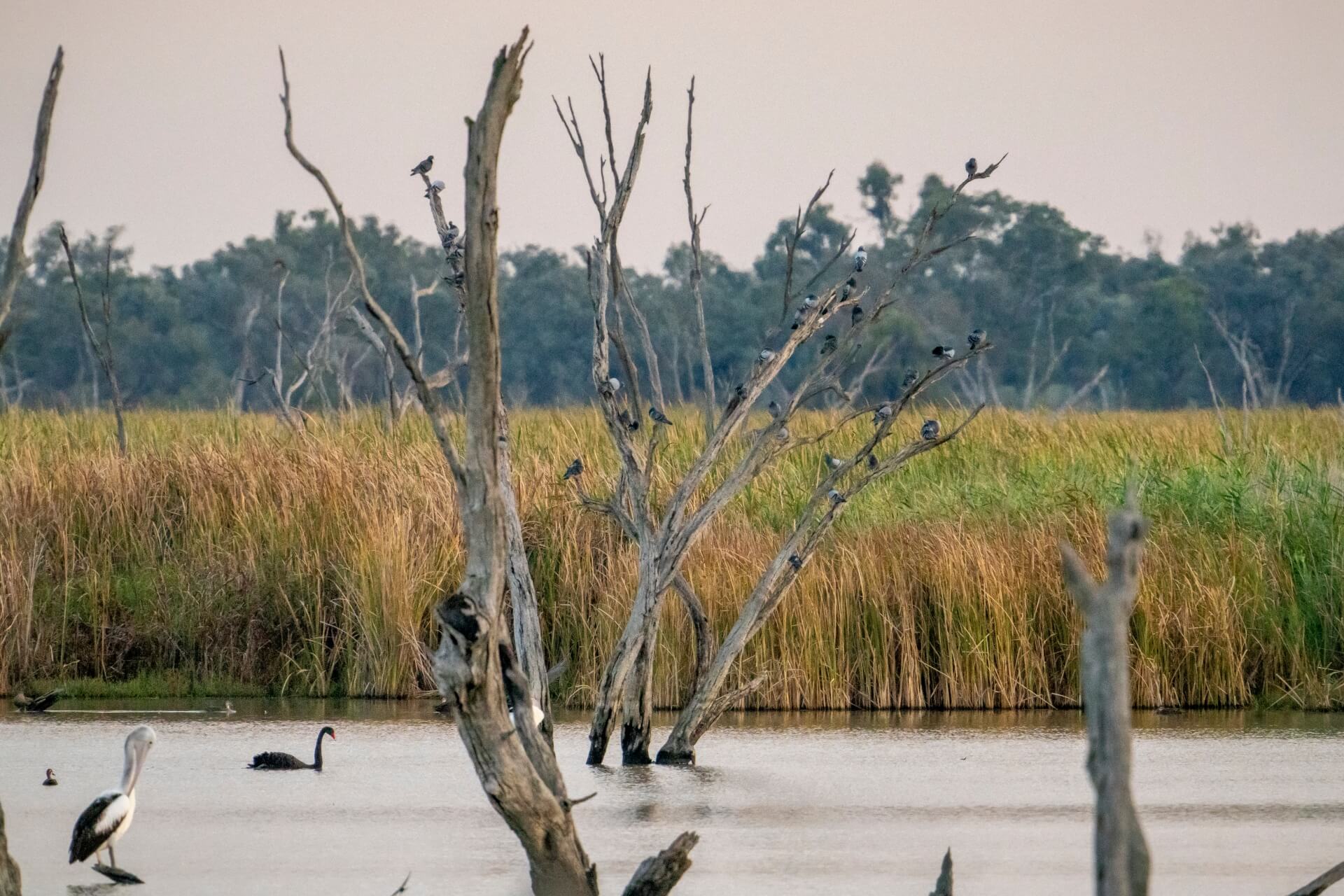The Gwydir Environmental Water Advisory Group (EWAG) met in Moree on 29 and 30 April 2025 for a planning session focused on environmental water use for the 2025–26 water year.
The following text is from the meeting in April 2025.
Catchment conditions – April 2025
The Gwydir region has experienced above-average rainfall in recent months, resulting in wet conditions. Forecasts indicate continued warm temperatures accompanied by average rainfall over the coming months.
The recent rainfall has contributed to inundation events in the Gingham, Lower Gwydir and Mallowa watercourses, with some areas exceeding the targeted 90-day inundation period. These flows have also successfully established river and creek connectivity, including a connection to the Barwon River.
Waterbird monitoring
The Gwydir wetlands provide vital habitat for a wide range of waterbirds, including migratory and threatened species. Monitoring these bird populations offers valuable insights into wetland health and the effectiveness of environmental water management strategies.
Over the past 12 years, annual surveys have tracked waterbird species, population numbers, breeding activity and available habitat.
In spring 2024, 46 waterbird species were recorded, including the black-necked stork, brolga, common greenshank, sharp-tailed sandpiper and Latham's snipe. Water levels varied during the November 2024 surveys, with some sites remaining wet while others were dry. To enhance habitat conditions, managed environmental water was released from early December 2024, inundating key areas to support waterbird populations.
Latest frog findings
Frogs in the Gwydir wetlands are surveyed annually to assess how water levels, including environmental flows, influence their populations. These surveys record species diversity, population numbers, distribution, and breeding activity. Frogs play a vital role in wetland ecosystems, serving as both predators and prey, and are key indicators of ecological health.
In spring 2024, 7 frog species were recorded, including all 6 flow-dependent species known to the region. Barking marsh frogs were widespread, while others—such as spotted marsh frogs, rocket frogs and salmon-striped frogs—were less common due to drier spring conditions. Breeding activity was observed at many sites, though it remained below average for flow-dependent species.
Vegetation
Wetland vegetation in the Gwydir region is monitored to assess how water levels, including environmental flows, support plant communities. This includes common wetland species as well as iconic trees such as river red gums and coolabahs. From 2019 to 2025, native vegetation consistently dominated monitoring sites under both wet and dry conditions.
Surveys are conducted across the Gingham, Lower Gwydir and Mallowa wetlands, with more recent monitoring sites added along Ballin Boora Creek. Tracking changes in plant communities helps evaluate the effectiveness of water management and understand how vegetation responds to disturbances such as fire. The Mungwonga and Old Dromana sites – previously affected by fire – have shown strong recovery following recent inundation.
Objectives and goals for 2025–26 and beyond
The EWAG's 2025–26 plan focuses on improving the ecological health of the Gwydir River system through targeted environmental water management.
Key objectives include supporting native fish by maintaining refuge sites during dry periods and ensuring connectivity between the Gwydir River and wetlands. Targeted species include Murray cod and freshwater catfish, particularly in the Mehi River. The plan also aims to improve connectivity between the Gwydir and Barwon rivers, enabling fish movement between systems and delivering broader ecological benefits.
For waterbirds, the aim is to increase numbers and breeding success by providing nesting habitat, particularly for threatened and migratory species. The group is also conscious of ensuring that key wetland areas – such as Gingham, Lower Gwydir, Mallowa, Macquarie Marshes and Narran – do not all experience dry conditions simultaneously.
Vegetation efforts under the plan aim to keep wetland and floodplain plants healthy, restore wetland areas and maintain riverside vegetation. This includes promoting new growth, increasing plant diversity and managing problem weeds like lippia and water hyacinth.
Longer-term goals for the EWAG involve using environmental water to actively improve the overall ecosystem health while saving water for future dry periods to protect wetland areas. The plan also includes a commitment to working closely with Aboriginal community members to understand and incorporate cultural values and goals.
